Welcome to FISH FOOD TIMES
Dec. 2018 issue No.180
![]()
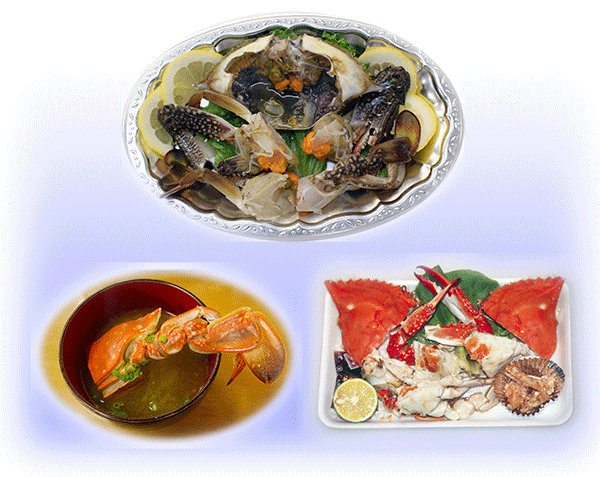
Female is winter, male is summer
A successful bid price of snow crab "Itukiboshi" from Tottori prefecture is 2 million yen
On November 7 of last month, at the Tottori Fishing Port in Tottori Prefecture, the snow crab initially bidded this year. The highest bid price was 2,000,000 yen for a snow crab with a shell width of 14.6 cm and a weight of 1.28 kg, and this price was registered in Guinness records on November 24.
Hamashita Tetsuji, President of "Kanemasa · Hamashita Shoten" who is dealing in local marine products, said, "I felt I did a too much smart thing when I was bidding down, but in the opportunity for prefectural crabs to be recognized in the world It was. " This snow crab was never sold, it was donated to Tottori prefecture as "I want you to use it for PR" and it will be exhibited at "Prefectural Tottori Karo Kanikkokan" near Tottori Port.
About snow crab, at FISH FOOD TIMES Just one year ago No.168 Value added products of snow crab It was taken up in the December issue of Heisei 29. I think that the reader is still remembered, but also this year the December issue decided to pick up the Japanese name Gazami common name Swimming crab, which is a member of the same crab.
The same crabs continued in December, as prices of crabs such as king crab, Hair queen crab as well as snow crab continue to rise from last year until this year, they are becoming as unattainable as the stars , because there was a feeling that I wanted to tell you that there are also crabs of common price in addition to this in Japan.
The total catch of "crab species" announced by the Ministry of Agriculture, Forestry and Fisheries in Japan is that the total of snow crab, deep red snow crab, swimming crabs, and other crabs, peaked from about 100,000 tons in 1983, It is reduced to about 28,700 t in 2015.
Among them, swimming crabs have been shifting with the amount of landing of more than 2,000 tons annually throughout the country since 2014. However, interesting phenomena are occurring in recent years. In Miyagi Prefecture where there were only a few tons of landings a year in the past, there has been an accident since the 2011 earthquake, and sudden swimming crab landing has been increasing. It will be surprising to say that it has exceeded 500 ton in 2015 and 662 tons in 2016 and 330 times as much as 2010.
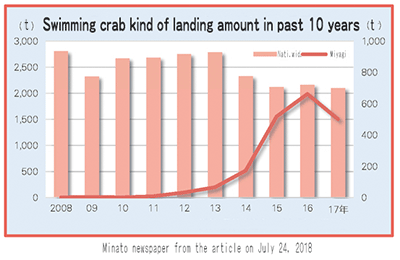
In Miyagi prefecture, although the landing of the crabs fell a bit in 2017, it seems that the 500 t of water will continue to be live in 2018 as well, and it seems that it will be the 1st in Japan for the fourth consecutive swimming crab type landing. The obvious reason why such an incident occurred is unknown, but what can be inferred is believed to be due to the tsunami caused by the accumulation of mud on the Gulf of Miyagi Prefecture and the change in the environment of the ocean floor. In other words, swimming crabs are supposed to have increased rapidly as the coastal area of Miyagi prefecture became a convenient environment for swimming crabs, because there is a habit of hiding in the mud and hibernating and overwintering in the winter.
Although the landing of swimming crab in Miyagi prefecture in East Japan suddenly increased like this, there is no custom to eat swimming crab as much as Chugoku and Osaka Kyushu and Kyushu district, local sells even if it is cheap but it is very troubled.
The price of Swimming crab is still alive, you can think that average is 200 g 1,000 yen, 400 g 2,200 yen, 600 g 3,600 yen. And the price goes up and down largely due to region, season, brand power, difference between male and female, etc. Basically swimming crab is higher as the size is larger and cheaper as the size is smaller. And when it dies, the value drops off, so depending on the place and time, demand and supply, it is not unusual for the price to drop to a price like a throwaway value.
Ecology and characteristics of Swimming crab
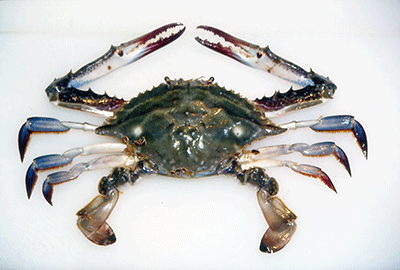
The upper image is swimming crab, but apart from this, the shell named swimming blue crab is deep indigo color and there are white spotted crab pattern. They are caught a lot in Shikoku, Kyushu, Okinawa, etc. and are treated almost similarly. Swimming blue crab male is easy to distinguish from swimming crab because the pattern of plaque is clear, but females are hard to distinguish. Swimming crab has four or more thorns in the circled area of the lower image of the leg with scissors, and swimming blue crab has only three.
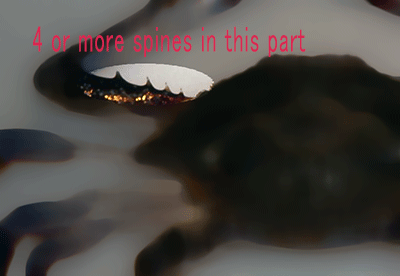
On the other hand, in some areas swimming blue crab is called gazami and gazami is called swimming crab. As I have been doing such a way of saying so far, I would like to unify the expressions in the following sentences with the words of swimming crab.
The following is a simplified ecology of swimming crab which was investigated in the reference material from the birth to the death.
Swimming crab matures in a whole year, and its life span is about 2 years. Mating is done in the fall, and the male becomes a state holding a female from behind with a leg for 2 to 5 days until females are molted and become soft armor. When a female sheds, the males ride the female back on their backs, hold the females with their legs, insert the copulation needle into the female gonopore, and send the capsules into the female's internal. Furthermore, males block female gonopore with cement-like substances (Chastity belt ...?), Capsules are stored in female bodies for more than half a year. And the egg laying is the first child born from May to June, the second child is born from July to August. Oviposition takes place at night, eggs are fertilized from capsules at egg laying. The number of laying eggs is between 0.8 and 4.5 million grains. The eggs born adhere to the inside of the part called Fudoshi of the female abdomen and become a mass of eggs. This is an egg called sotoko, the color of the egg changes from yellow orange to gray black, and they hatch in about 2 to 3 weeks. Immediately after hatching, the larva transformed into juvenile crabs in about a week, swimming up from the middle to the upper layers during the day. As the juvenile crabs grow, they change their habitat from soft soil to sand mud, and in autumn the carapace width is around 15 cm. The first child matured by November and reached about 18 cm, the second child hatching around September crosses the winter in about 7 cm, and grows to around 25 cm in September of the following year. Molting is done 10 to 15 times in the meantime, after having released the secondborn larva from the fundoshi, it will be over. |
|---|
The origin of the name of swimming crab is because the fifth leg at the back is a structure that is convenient for swimming like a fin (leg fins) to attach when diving. Swimming crab is good at swimming for crab and can move over a wide range, so it became called swimming crab. The swimming crab which freely travels in the ocean is also called "a wanderer of the sea".
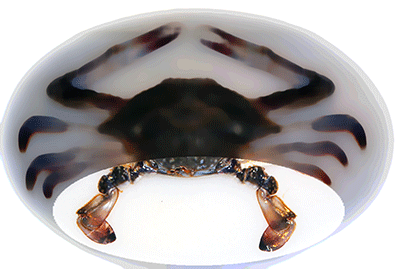
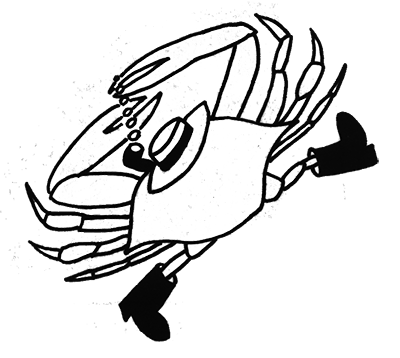
However swimming crab is good at swimming, even if there are two such small fins, its swimming ability is not great. So if you find it in the natural enemy ray or octopus it will not be easy to escape, so if they are bite their legs, swimming crab will have a good skill to separate themselves and escape. This is called a self-mutilation behavior, and legs will grow in the same way again from the separated part.
In addition, the temper is rough as well as good swimming crab, even with each other crabs it will cause a fight immediately with the big nail, self-mutilation will be done as a result of the conflict, and legs often disappear. So when transporting a landing swimming crab it is normal to be bound by rubber like a bottom image so as not to do self-mutilation.

On the other hand, are there any experiences of readers who have seen swimming crabs, living hair crabs, Japanese Tiger Prawn etc put in a box containing sawdust like the image below for transportation?
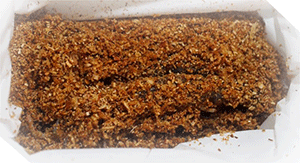
Have you ever wondered why crabs and shrimp can live for a long time in sawdust instead of in the water? This is the wisdom of the predecessor, since the sawdam wet with water can keep moisture in the sealed box and prevent drying, it is possible to supply moderate moisture to crabs and shrimp.
However, no matter how much moisture the moist sawdust has, although it is not in the water, why can they live? Perhaps I think that the readers have seen interesting phenomena where live crabs and shrimp put in saw dust blowing foam from the mouth. That is the point at which the question is solved.
Not only swimming crab but also all kinds of crabs are not amphibians, although they live in the water, they can also move around on land without difficulty. The reason is that there is a secret in this bubble, originally the crab's gills has a structure that makes it easy to take in oxygen from the air. In addition to that, if you have plenty of sawdam, swimming crab takes in the moisture in sawdam by bubbling out of its mouth making it easy to incorporate oxygen into the bubble.
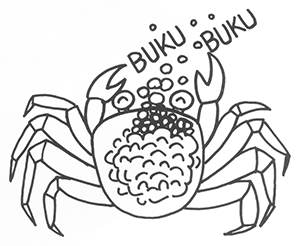
Eat swimming crab delicious
I think that readers were able to understand a little about the interesting ecology of swimming crab, so let's move on to the knowledge of eating this time.
First of all, as for the season when you can eat swimming crab deliciously, there seems to be various opinions in various parts of the country, but my opinion is "there is a male season and a female season". So the price of male and female will differ greatly depending on the season.
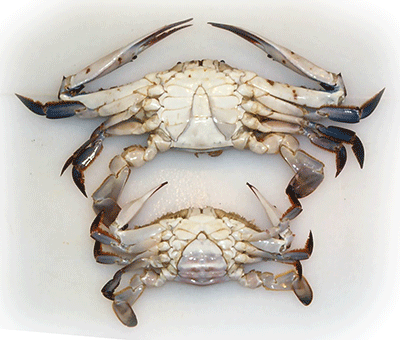
The image shows the abdomen by turning over two swimming crabs, but the top is male and the bottom is female. There is a difference in the shape of the abdomen lid which is commonly called fundoshi, it is male to be thin, and the wide shape to the side is female.
The female season is from December to May, and the red ovary called uchiko is a good time, and its rich taste and sweetness can enjoy various tastes by burning and steaming. Basically it is said that the female cold season is the most delicious, but females around April to May of spring are much more uchiko and become red, so it is said that this time is also delicious.
In the case of male, uchiko is not contained at all like a female, and hepatic pancreas called miso can not be expected too much. However, from July to September, the degree of clogging of the shoulder meat at the base of the male's legs and legs is very good. Also at this time the sweetness of the male's body is ten times that of the female, so the male can say that the summer in the hot season is the season.
In Sensyu in Kansai, swimming crab is said to be a bon bon cost, Sensyu Kishiwada's danjiri festival is also known as "crab festival". Swimming crab is familiar to this area that has been eaten by festivities and celebrations, local people and fishermen say "The taste of swimming crab is summer male".
I will show you how to cook swimming crab below.
| how to cook swimming crab | |
|---|---|
| For pot dishes & miso soup | Steamed swimming crab |
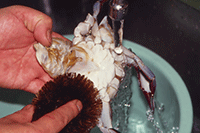 |
|
| 1, Wash away trash the surface of the crab and in the fundoshi. | |
 |
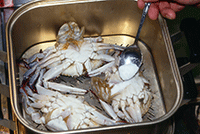 |
| 2, Wake up fundoshi, remove the shell. | 2, Place belly up on a steamer, put a handful of salt on the inside of fundoshi, then steam it. |
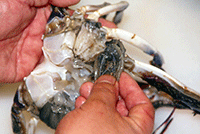 |
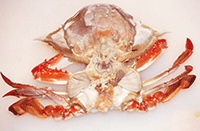 |
| 3, Remove gills called gani. | 3, Remove the shell |
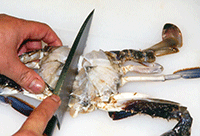 |
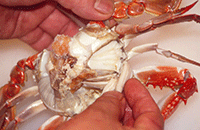 |
| 4, Cut the torso body into two. | 4, Remove gills called gani. |
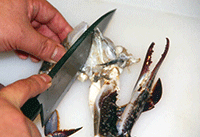 |
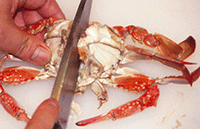 |
| 5, Cut the shoulder meat into two. | 5, Cut the torso body into two, to further halve. |
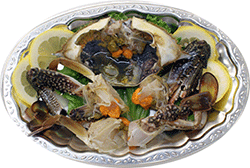 |
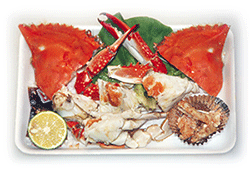 |
| Items of for pot dishes & miso soup | Items of steamed swimming crab |
As introduced above, it is better to steam with steam than boiling in hot water if possible. Place one side of a salt in the fundoshi with your belly upside, steam it, leave it for about 15 minutes from that state, the umami will condense and become more delicious.
swimming crab dishes
Branded swimming crabs are on sale all over the country. I tried to appreciate "kakaji misaki gazami" in Bungo Takada city Oita prefecture, one of them.
It was a shop name of the agricultural seafood direct selling place (a fisherman's fish shop) Sun western, it was a store that seemed to make us eat fresh swimming crabs as much as they were harvested.
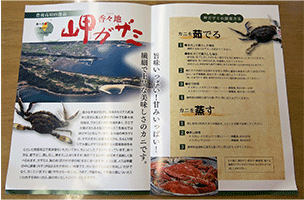
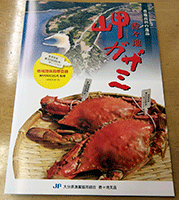
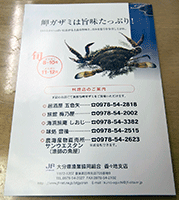
When entering the store, there were many big tanks, where countless crabs that were sorted to a certain size were placed in a green basket and lined up.
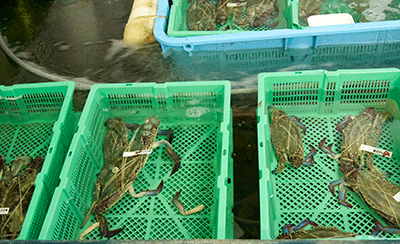 s
s
The customer first chooses a price crab with a price that matches the contents of his wallet. The price ranges from around 2,000 yen to nearly 10,000 yen at the top, and there is a wide range of products. When you specify the price, the shop person selects the swimming crab of the size corresponding to it from the aquarium.
After choosing swimming crab, take it to the canteen next to the door, designate how to cook the swimming crab you choose, wait for other recipes to be sent to the staff and wait for the cuisine to be ready It will be. What we chose was two females in the image below. It's not big, but it's not as small as it was.
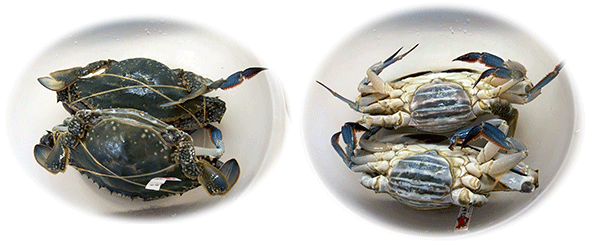
And these swimming crabs and dishes were finished in this way and brought.
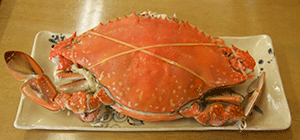
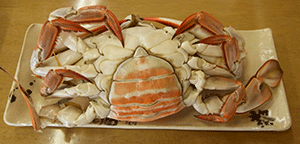
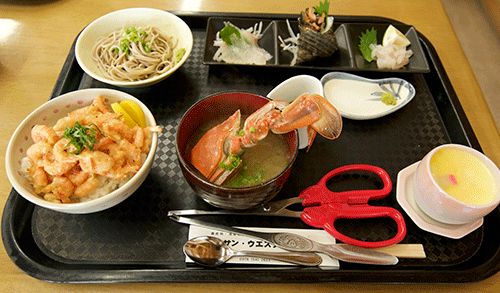
Although the tag is not attached to the swimming crab of the top image, it was tagged as follows when it was carried. We decided to be "steamed", but they seem to be able to ask for boiling.
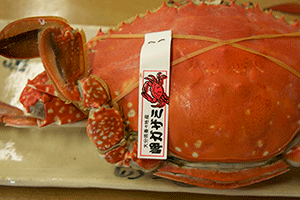
One thing to notice in the dish of swimming crab is that as there is a phrase "Do not eat gani even if you eat crab", if you do not leave out the part of gills called gani tightly, The taste of swimming crab gets spoiled. Even this point, swimming crab can be deliciously steamed or boiled.
In this restaurant, steaming with the rubber band attached, the shop staff does not handle the contents by opening the shell and the gani remains attached as you can see in the picture. So when you eat dishes, you start with gani removal work.
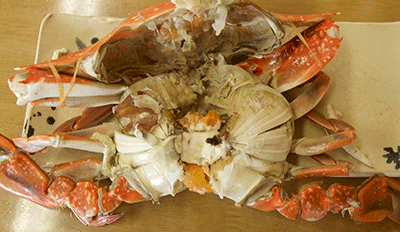
When opening the shell, uchiko and miso were not so big as to be deeply impressed, but decided to think that it was good at this time. Meanwhile, the volume of the shoulder meat is plentiful, and even if you eat the shoulder meat with a crab spoon, I felt that the meat came out one by one and was not over.
In December, the female of swimming crab grows bigger as uchiko develops and responds to eating. Maybe the summer male is also delicious, but again the female is eating in the winter. Made with hot pot dishes and miso soup, the crab's broth that the extract has melted is also delicious.
And, the smaller swimming crab was divided in half, the extract was firmly melted into the miso soup which was stick out from the bowl and it was able to get the miso soup very delicious.
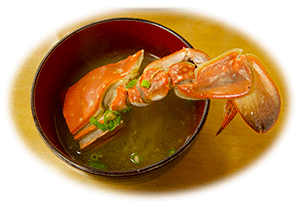
In December, female of swimming crab grows bigger as uchiko develops and should respond to eating. Even though the male in summer is also delicious, there is no doubt that the female is delicious in winter.
Recently, rather than chasing expensive crabs such as snow crab, king crab, Hair queen crab, etc. living in the cold waters of the North Sea which continues high price which does not know to stop, as a material of business, either Speaking of swimming crab living in the relatively warm sea of the southern side, please also look a little.
If you read the article contents of the FISH FOOD TIMES December issue, I think that some fisheries officials in Miyagi prefecture boasting the number one swimming crab in Japan in recent years will find several hints that can be used to activate swimming crab distribution in the future . I am pleased if it helps even a little in such a thing.
An opinion and the communication are to iinfo@fish food times
Date of updating 1 Dec. 2018
